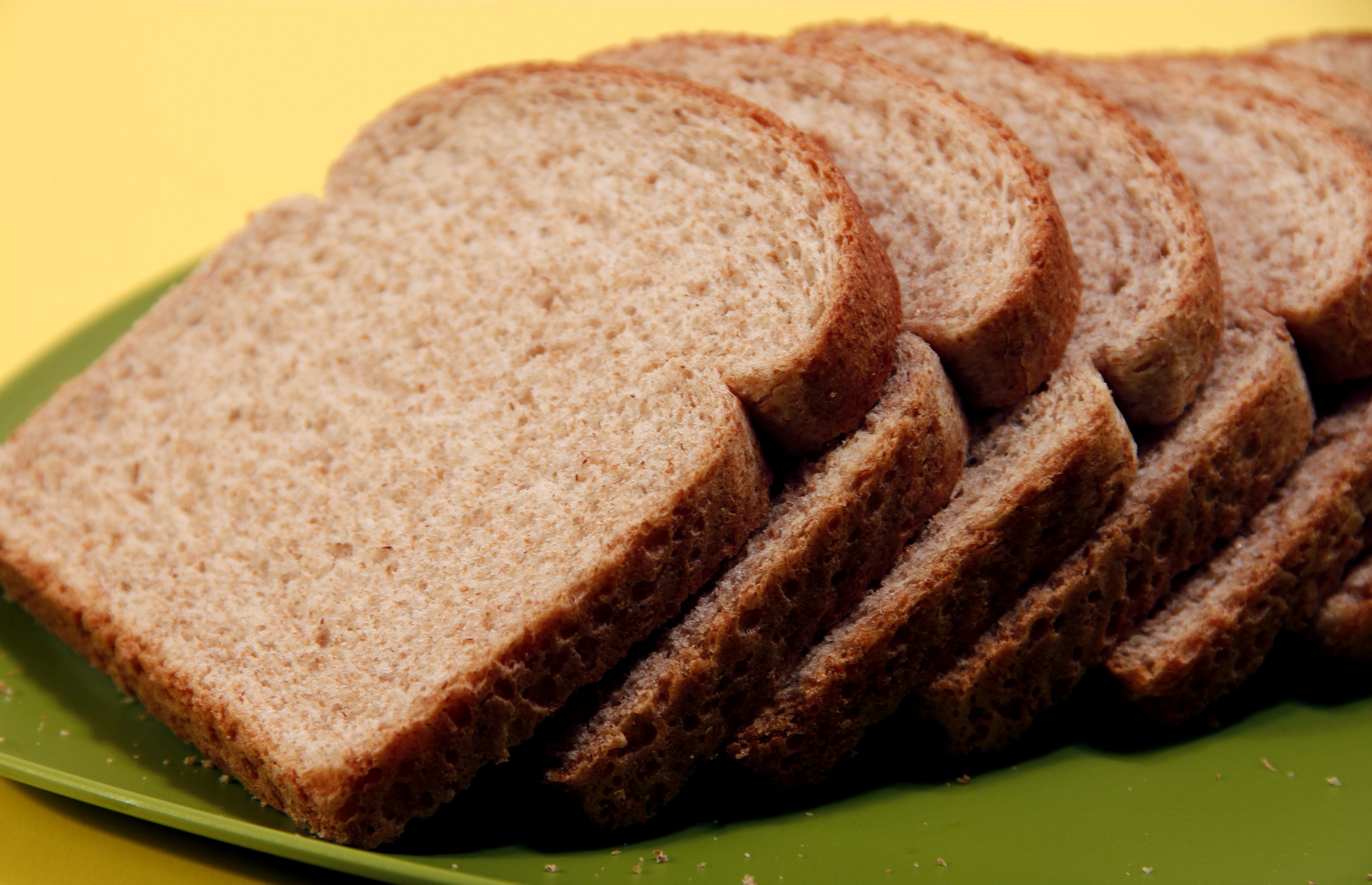By Alise Robers, Recent Arizona State University Student
When grocery shopping there are so many different options and brands to choose from. It can sometimes be overwhelming! If you want to pick out a loaf of bread that is 100 percent whole grain, you have to be wary of the many breads that are pretending to be healthier for you. Breads that claim to be “wheat breads” are often enriched with over 50 percent white flour with molasses or caramel added to make them look like whole wheat.1 To avoid the headache, here are some hints for finding true whole grain bread, rolls, and crackers.

Hint #1: To ensure the bread you are buying is in fact whole grain, it’s important that you first read the ingredient list on the food label. It’s helpful to know that the ingredient that weighs the most will be listed first and the ingredient that weighs the least will be listed last.1 For example, if the whole grain is listed first, then you know that ingredient makes up the majority of that product. Look for whole wheat, whole oats, whole rye, whole grain corn, whole grain barley, or brown rice as the first ingredient. Stay away from breads that list wheat flour, de-germinated cornmeal, or enriched flour as their first ingredient because these are not good sources of whole grain.1,2
Hint #2: The Dietary Guidelines for Americans recommends you make half or more of the grains you eat whole grains.3 This means 3 to 5 servings of whole grains every day. When picking out your loaf of bread look for the packages that have the Whole Grains Council stamp, which will show you how many grams of whole grain are in one serving of the product.2 One serving of whole grains is 16 grams, and your goal should be to eat about 48 grams per day!
Hint #3: Keep an eye out for the whole grain health claim on food product labels: “Diets rich in whole-grain foods and other plant foods and low in saturated fat and cholesterol may help reduce the risk of heart disease.”1,2 This claim ensures that the product contains at least 51 percent or more whole grains by weight and is low in fat.
Hint #4: Pay attention to the amount of fiber listed per serving on the nutrition label. If the product contains a substantial amount of whole grain ingredients it should have a minimum of 2 grams of fiber per serving.1 Keep in mind that it is very possible for a product to have a large amount of fiber but no whole grain ingredients. Food manufacturers will add functional fibers to certain foods and depending on these in order to meet your daily fiber needs is not as healthy as eating a diet rich in whole grains.1
Eating a diet that is nutritionally balances is one of the best ways to keep yourself fit and healthy. Whole grains are a big part of that, so don’t forget to get your daily serving! For more information about whole grains, visit Fill Your Plate!
References:
- Drummond, Karen Eich, and Lisa M. Brefere. Nutrition for Foodservice and Culinary Professionals. 8th Hoboken, NJ: John Wiley & Sons, Inc., 2010. 55, 92-93. Print.
- “U.S. Dietary Guidelines and WG.” U.S. Dietary Guidelines and WG | The Whole Grains Council. N.p., n.d. Web. 2017. http://wholegrainscouncil.org/whol-grains-101/how-much-enough/us-dietary-guidelines-and-wg.
- “Chapter 1 key Elements of Healthy Eating Patterns.” A Closer Look Inside Healthy Eating Pattersm-2015-2020 Dietary Guidelines. N.p., n.d. Web. 2017. http://health.gov/dietaryguidelines/2015.guidelines/chapter-1/a-closer-look-inside-healthy-eating-patterns/.

